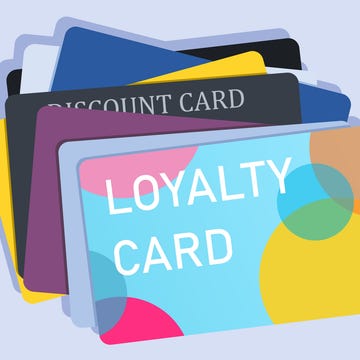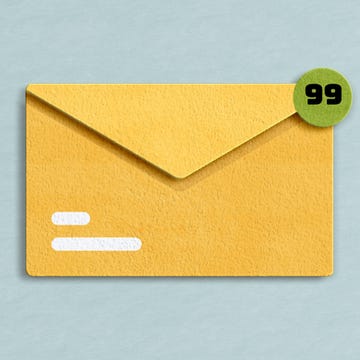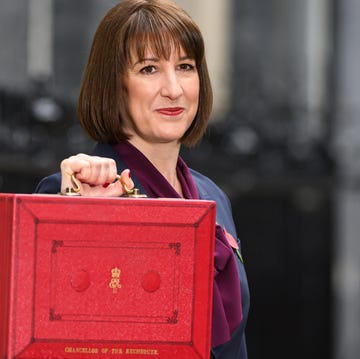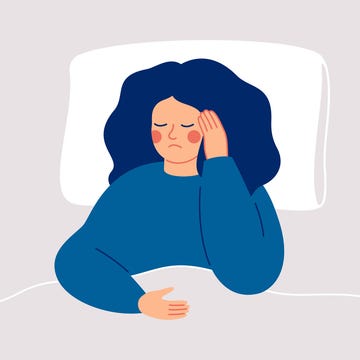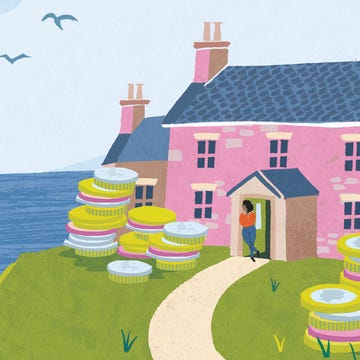With climate change topping the list of our most pressing environmental concerns, according to a survey of Good Housekeeping readers, it's little wonder that so many of us are looking for ways to make our household's energy use more eco-friendly.
In the first six months after the launch of the Green Homes Grant in September last year, over 100,000 of us in the UK applied for funding to make our homes more energy efficient, according to government figures. Meanwhile, the number of us signing up to green energy products when we switch tariffs has roughly quadrupled since 2018, according to data from comparethemarket.com.
If you're keen to do your bit to combat climate change, switching to a green energy tariff could be a logical first step.
How does energy affect climate change?
The total carbon emissions from heating and powering our homes comes top of the list of contributors to climate change, ahead of driving our cars, taking flights and producing the food we eat, according to the Energy Saving Trust. Yet, almost half of us say we haven't switched to a green energy tariff because we don't feel we know enough about them. To ensure you have all the facts you need to make an informed decision about your energy use, we've answered some commonly asked questions about green energy.
What does green energy mean?
Green energy is a term that’s used to refer to energy that comes from renewable sources. For electricity, this means wind, solar and hydro generation, as well as electricity produced from burning organic matter, which is a type of bioenergy. Electricity from renewable sources accounted for 47% of all the energy produced in the UK in the first three months of 2020, up from 36% a year earlier*.
Green gas (also called ‘biogas’ - another form of bioenergy) is less readily available but despite this, a third of all the dual fuel tariffs available mid-way through this year were being sold as green tariffs. Where an energy supplier is offering a dual fuel tariff, it may supply a certain amount of biogas but will also rely on offsetting the carbon emissions from the gas its customers use in order to make its tariff greener.
If you’re thinking of signing up to a duel fuel tariff that offers a certain amount of biogas, ask the supplier how this is generated if you want to know how green it is likely to be.
‘Green gas can be generated from farm waste,’ explains Mike Childs from Friends of the Earth. ‘This has to be a good thing as you’re capturing energy from something that otherwise wouldn’t have a use. But when crops are being grown specifically to produce green gas, and those crops are being sprayed with pesticides or taking up land that could otherwise be used to grow food, you’re into environmentally questionable territory to say the least.’
Which is the cheapest green energy supplier?
Research from Comparethemarket.com shows that in September last year four in ten of the cheapest energy deals on the market were green tariffs, including the cheapest tariff overall. What's more, all of the green energy tariffs in the price comparison site's top 30 cheapest tariffs that month beat the energy price cap by at least £200. To find the current cheapest green tariffs, use a price comparison site, but bear in mind that not all the deals you find may be as green as they claim.
There's a significant gap between the huge number of so-called green energy tariffs available today and the amount of genuinely renewable energy in the national grid, cautions Peter Earl, head of energy at comparethemarket.com. "There has been growing demand from customers to switch their energy supply to a more sustainable source," he notes. "Providers have been quick to latch on to this emerging trend, with the majority of tariffs on the market now labelled as green. However, the reality is that not all these tariffs are as green as people may hope. Some suppliers seem to be generously marketing tariffs to consumers as green or renewable, when in fact the fuel is not sourced sustainably."
Which is the best green energy supplier?
If you’re thinking of signing up to a green tariff, you may want to compare the eco-credentials of different providers. As things currently stand, however, this is easier said than done.
To offer a green tariff, a supplier has three ways of ‘matching’ the energy you use from the National Grid with green energy. Some suppliers (including Good Energy, Ecotricity and Green Energy UK) generate their own renewable energy (or a certain amount of renewable energy) or buy energy directly from renewable energy generators. Others, however – even those that claim to offer 100% renewable electricity – buy certificates that are issued when renewable electricity is generated without buying the green energy itself. The same applies to green gas.
They can do this because of a loophole in the rules enforced by the energy regulator, Ofgem, relating to how energy suppliers can sell green tariffs.
This means that some green energy customers may not be getting exactly what they think they are paying for. Ofgem has urged energy suppliers to consider whether they are ‘communicating clearly and honestly’ about how green the energy they provide to customers really is but told us that responsibility for setting rules around this lies with the government.
The Department for Business, Energy and Industrial Strategy is currently looking into how the eco-friendly credentials of different green energy tariffs can be communicated to customers in a more transparent and accurate way. It will publish its findings this year.
‘There’s a real difficulty for consumers when it comes to differentiating between the different shades of green in the energy market,’ Mike Childs told us. ‘Companies that aren’t actually doing anything to drive growth in the amount of renewable energy being produced shouldn’t really be selling their product as a green product. This is where Ofgem needs to do the work for the customer.’
In the meantime, to help consumers judge how green a renewable energy tariff they are thinking of signing up to really is, Uswitch has launched its own accreditation scheme. This gives green energy tariffs a Bronze, Silver or Gold rating, to make their eco-credentials clear.
If you'd like more great money content, SIGN UP HERE for our fortnightly Financially Fabulous newsletter!





